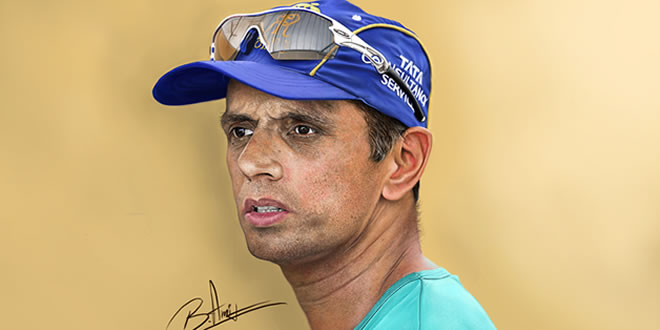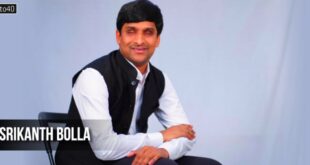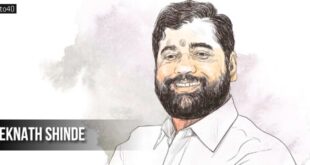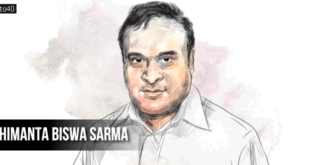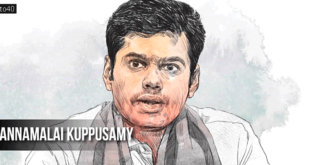Rahul was born on January 11, 1973 in Indore, Madhya Pradesh, to parents Sharad Dravid and Pushpa. He started to play cricket at the age of 12. Dravid did well in the junior tournaments to merit selection in the State under-15, under-17 and under-19 tournaments. Meanwhile he finished his bachelors from St. Joseph’s College of Commerce.
He made his debut in the Ranji Trophy match against Maharashtra at Pune in 1990-91. He was the youngest Karnataka player to score a maiden century in Ranji. In 1995-96 he broke into the international team. He made his debut in One Day Internationals against Sri Lanka at Singapore in 1996. He is one player who has always shown stability and concentration and delivered solid performances in all the games that he played. Dravid was the highest scorer in the 1999 World Cup, when he along with Sourav Ganguly created a new World record for the highest partnership of 318 runs for any wicket. Rahul’s abilities are not confined to batting alone. He bowls right-arm off breaks and now is a good reserve wicket keeper also.
Rahul keeps his cool even in a crisis and thus is a reliable anchor for the Indian team. Since he started playing he has maintained a Test career average of over 50. Technically his batting is flawless and he has improved with experience especially in Test Cricket.
Dravid has been honored with the Arjuna Award by the President of India. Rahul Dravid was the 12th Indian to be named one of Wisden’s five Cricketers of the Year for the year 2000 after his splendid performance in the 1999 World Cup in England. This talented player with his scores remains a pride to the Indian team
Rahul Sharad Dravid, is married to Vijetha Pendharkar, a Nagpur-based doctor.
Biography
Rahul Sharad Dravid (born 11 January 1973 in Indore, Madhya Pradesh) is an Indian cricketer, and the current captain of the Indian cricket team. He grew up in Bangalore, Karnataka. Though dropped from the one-day team earlier in his career for scoring relatively slowly, he is, at present, ranked the 7th best Test batsmen by the ICC in world cricket at the moment, and has the highest Test batting average of any Indian batsman in history. He started his international cricket career in 1996.
Early Years
Born in Indore, Dravid’s family relocated to Bangalore, Karnataka, where his father worked for Kissan, a company known for jams and preserves. This lead to him earning the nickname Jammy from his teammates at St. Joseph’s, Bangalore. Dravid first came to prominence whilst attending a summer coaching camp at the Chinnaswamy Stadium where his talents were spotted by former cricketer Keki Tarapore who was coaching at the clinic. He went on to score a century on debut for his school team and was selected for the U-15 Karnataka cricket team, scoring a double century against the U-15 Kerala cricket team [citation needed]. Along with the batting, he was keeping wickets. However, he later stopped keeping wickets on advice from former Test players Gundappa Vishwanath, Roger Binny, Brijesh Patel and Tarapore. He was selected to make his Ranji Trophy in February 1991 against Maharashtra in Pune (while still attending college at St. Joseph’s College of Commerce in Bangalore), alongside future Indian teammates Anil Kumble and Javagal Srinath, scoring 82 in a drawn match after batting in the No. 7 position. his first full season was in 1991-92, when he scored two centuries to finish with 380 runs at an average of 63.3, and was selected for South Zone in the Duleep Trophy, for whom he has been subsequently chosen annually. He had a stronger season in 1992-93, scoring 582 runs at an average of 83.1 including a double century but managed only one game in the Duleep Trophy, scoring 14. In the following year, he had another strong Ranji Trophy scoring 644 runs at an average of 80.5 including two centuries but again had a disappointing Duleep Trophy campaign, averaging just 13. However, in the 1994-95 season, Dravid played only once in the Ranji competition, but he scored 191 in his only innings and averaged 52 in the Duleep Trophy. In the 1995-96 Ranji Trophy season, he scored 153 as captain against Hyderabad in the semi-final to advance to the final, in which he scored another century against Tamil Nadu. In total he scored 460 runs at an average of 57.50 and was the second highest run-scorer in the Duleep Trophy behind V. V. S. Laxman as well as topping the averages. Dravid became a contender for International duties after being selected for the India A team in a domestic tournament in the 1994-95 season and again in the 1995-96 season, where he top-scored for his team in the match against India B and the final against the senior Indian team. However, he was overlooked from the Indian team for the 1996 Cricket World Cup held on the Indian subcontinent.
International Career
Dravid made his international debut in one-dayers against Sri Lankan cricket team in the Singer Cup in the Singers ground in Singapore immediately after the World Cup in March 1996, replacing Vinod Kambli. After scoring just 21 runs in four matches, Dravid was dropped during the Sharjah tournament and did not play again until Sanjay Manjrekar was injured on the tour of England.
With Manjrekar sidelined, he then made his debut in the Second Test against England along with Sourav Ganguly, scoring 95. He held his position on Manjrekar’s return for the Third Test, scoring 84. After moderate home series against Australia and South Africa, Dravid broke through on the 1996-97 tour of South Africa. He batted at No. 3 in the third Test in Johannesburg, scoring his maiden century with 148 and 81, the top score in each innings to claim his first man of the match award. He also finally made his first half-century against Pakistan in the Sahara Cup in 1996, scoring 90 in his 10th ODI.
In the 18 months ending in mid-1998, he played in an away series against the West Indies, home and away series against Sri Lanka and a home series against Australia, he scored consistently, with 964 runs at an average of 56.7. He scored eleven half-centuries but was unable to convert them to triple figures. He scored his second century in late 1998 against Zimbabwe in a one-off Test match, top-scoring in both innings with 148 and 44, but was unable to prevent an Indian defeat. He then became the third Indian batsman after Vijay Hazare and Sunil Gavaskar to score centuries in both innings of a match during the 1999 New Year’s Test match against New Zealand with 190 and 103* to force a draw, batting for a total of 653 minutes. He had a moderate sub continental season in early 1999, scoring 269 runs at 38.42 with one century before scoring 239 at 39.8 including a century against New Zealand in late 1999. This was followed by a poor away series against Australia and another poor home series against South Africa, accumulating just 187 runs at an average of 18.7. He then scored 200*, his first double century, against Zimbabwe in Delhi which along with 70* in the second innings helped India to victory. It was the first time he had passed 50 in 12 months and he followed this with a 162 in the following Test, giving him 432 runs in the two match series at an average of 432.
Dravid’s Style
With a strong technique, he has been the backbone for the Indian cricket team. Beginning with the reputation of being a defensive batsman who should be confined to Test cricket, he was dropped from ODIs as he was slow in making runs. Of late, however, Rahul Dravid has defied early perceptions to become the mainstay of the Indian batting line-up in ODIs [citation needed] as well as in Tests. His nickname of ‘the Wall’ in Reebok advertisements has now become a tribute to his consistency. Dravid has scored 23 centuries in Test cricket at an average of 58.75, including 5 double centuries. In one-dayers though he has an average of 40.05, he is a slow scorer at a strike rate of 70.70. He is one of the few Indians who average more at away matches than at home, averaging over 10 more runs a match abroad than on Indian pitches. As of 9 August, 2006, Dravid’s average in overseas Tests stood at 65.28 as against his overall Test average of 58.75, and his average for away ODI stands at 42.03 as against overall ODI average of 40.05. In matches that India has won, Dravid averages 78.72 in Tests and 53.40 in ODIs.
Dravid’s sole Test wicket was that of Ridley Jacobs in the fourth Test against the West Indies during the 2001-2002 series. While he has no pretensions to being a bowler, Dravid often kept wicket for India in ODIs, an ‘experiment’ that continued for several seasons. He has since delegated the wicket-keeping gloves, first to Parthiv Patel and more recently to Mahendra Singh Dhoni. Dravid is now purely a batsman, one who has averaged 63.51 in matches played since 1 January, 2000.
Dravid was involved in two of the largest partnerships in ODIs: a 318-run partnership with Sourav Ganguly, the first pair to combine for a 300-run partnership, and then a 331-run partnership with Sachin Tendulkar, which is the present world record. He also holds the record for the greatest number of innings since debut before being dismissed for a duck. His highest scores in ODIs and Tests are 153 and 270 respectively. Uniquely, each of his five double centuries in Tests was a higher score than his previous double century (200*, 217, 222, 233, 270).
Also, Dravid is the current world record holder for the highest percentage contribution of runs scored in matches won under a single captain, where the captain has won more than 20 Tests. In the 21 Test matches India won under Sourav Ganguly’s leadership, Dravid played his part in every single one of those wins, scoring at a record average of 102.84 and piling up an astonishing 2571 runs, with nine hundreds – three of them double-centuries – and ten fifties in 32 innings. He contributed nearly 23% of the total runs scored by India those 21 matches, which is almost one run out of every four runs the team scored.
Rahul Dravid’s career performance graph. He was named one of the Wisden cricketers of the year 2000.
In 2004, Dravid was awarded the Padma Shri by the Government of India. On 7 September, 2004, he was awarded the inaugural Player of the year award and the Test player of the year by the International Cricket Council, ICC (associated image below). Dravid’s batting average of 95.46 in the past year has made him the only Indian to be in the Test team of the year. On 18th March, 2006, Dravid played his 100th Test against England in Mumbai.
In 2005, a biography of Rahul Dravid written by Devendra Prabhudesai was published, ‘the Nice Guy Who Finished First’.
In the 2005 ICC Awards he was the only Indian to be named to the World one-day XI.
In 2006, it was announced that he would remain captain of the Indian team up to the 2007 World Cup in the West Indies.
Tests: Personal Records
- Dravid has the second highest Test batting average among those who have scored over 8,000 Test runs. (September 2006)
- Scored nearly 23% of the total runs put up by India (with a batting average of 102.84) in the 21 Test matches won under Ganguly’s captaincy. This is the highest percentage contribution by any batsman in Test cricket history in matches won under a single captain where the captain has won more than 20 Tests.
- Longest streak of consecutive Tests since debut (96)
- Only player to score a century against every Test playing nation away from home (until the ICC decides to add more nations to the list of Test playing nations his record can only be equaled, not broken).
- Involved in highest partnership made away from home for any wicket for India with vice captain Virender Sehwag of 410 runs vs Pakistan at Lahore in 2006 (the highest partnership between a captain and the vice captain).
- He is the fastest to reach 9000 runs in Test cricket. In all he took 176 innings to do this, bettering the previous record set by Brian Lara by 1 innings.
- Dravid is one among the only three batsmen to hit Test centuries in four consecutive innings. The other two are Jack Fingleton and Alan Melville. Dravid achieved this by hitting scores of 115, 148, 217 and 100* in three successive matches against England and one against the West Indies. Only Everton Weekes, with centuries in five consecutive innings, has achieved a longer sequence of consecutive Test hundreds.
- With scores of 50 or more in 7 consecutive Tests Dravid bettered the previous Indian record of 50+ scores in 6 consecutive Tests for a single batsman. This record was shared by Vijay Hazare, Chandu Borde, Sunil Gavaskar, Dilip Vengsarkar and Sadagoppan Ramesh. As of October 2006 this streak is unbroken.
- He is currently joint 4th along with Brian Lara among batsmen who have scored most away runs in Tests (5288 as of August 9th 2006). Only Sachin Tendulkar, Allan Border and Vivian Richards have scored more away Test runs.
- Best career average among players who have played 100 or more Tests.
- Best away average among players who have played 50 or more away Tests.
- 9th batsman to score twin hundreds in a Test twice, and only the 2nd Indian to do so, after Sunil Gavakar.
- 1st Indian to score 5 double hundreds, each bigger than the previous.
One Dayers: Partnership Records
- The only batsman to have been involved in two ODI partnerships exceeding 300 runs.
- First batsman to be involved in a 300 run partnership along with Sourav Ganguly in the 1999 World Cup match against Sri Lanka at Taunton.
- Involved in the highest partnership in the history of ODI cricket with a 331 run partnership along with Sachin Tendulkar vs New Zealand at Hyderabad in 1999-2000.
- Has the record of not being dismissed on duck for 120 consecutive ODI matches.
World Cup Records
- He was the leading run scorer in the 1999 World Cup with 461 runs.
- Highest score by a wicketkeeper in a World Cup.
Captaincy Records
- The highest winning percentage among all the captains who have captained their sides in at least 5 ODIs. He’s won 23, lost 13 and had no result in 1 – this winning percentage of 62.16 displaces Ajay Jadeja’s 61.54
- He is tied with Sachin Tendulkar in fourth place for having captained India in the most victorious matches.
- Has the highest ODI batting average as captain of 45.58 (as of 4/7/06), among all captains who have captained more than 10 ODIs.
Tests: Outstanding Innings
- 180 vs Australia at Kolkata, India in 2001
- 148 vs England at Leeds, UK in 2002
- 233 and 72* vs Australia at Adelaide, Australia in 2003
- 270 vs Pakistan at Rawalpindi, Pakistan in 2004
- 110 and 135 vs Pakistan at Kolkata, India in 2005
- 81 and 68 vs West Indies at Kingston, Jamaica in 2006
One Dayers: Outstanding Innings
- 126 vs New Zealand at Taupo, New Zealand, in 1998-99
- 145 vs Sri Lanka at Taunton, England, in 1999
- 153 vs New Zealand at Hyderabad, India, in 1999-2000
- 50*(22 balls) vs New Zealand at Hyderabad, India, in 2003-04
- 125* vs West Indies at Gandhinagar
Captaincy: Achievements
- Rahul Dravid led India to a historic Test series win, against the West Indies in their home soil in 2006. Since 1971, India had never won a Test series in the West Indies. This is also their first prominent series win outside the Indian subcontinent (barring the win against Zimbabwe in 2005) since 1986.
- Under Dravid’s captaincy the Indian team tied the previous record of most consecutive One-Day International wins for an Indian team (8).
- During his captaincy the Indian team broke the 14 match West Indies record for most consecutive won matches in One-Day Internationals while chasing a total. For this 17 match run, Dravid was the captain for 15 matches and Sourav Ganguly was the captain for the other two. This streak was broken on 5/20/06, when India lost to the West Indies by one run, at Sabina Park, Jamaica.
Criticism
- One of Dravid’s most debated decisions was taken in March 2004, when he was standing in as captain for an injured Sourav Ganguly. The Indian first innings was declared at a point when Sachin Tendulkar was at 194 with 16 overs remaining on Day 2. In Dravid’s defence, the media noted at the time that the decision had apparently been made by Ganguly, and Ganguly himself later admitted that it had been a mistake, the wording of the statement indicating that it had not been Dravid’s call.
- Rahul Dravid has had a mixed record when leading India in Tests. India lost the Karachi Test in 2006, giving Pakistan the series 1-0. In March 2006, India lost the Mumbai Test, giving England its first Test victory in India since 1985, enabling Flintoff’s men to draw the series 1-1. While the loss in Karachi could be put down to several Indian batsmen playing badly, the defeat in Mumbai was arguably the result of Dravid’s decision to bowl first on a flat dry pitch which later deteriorated and ended with an Indian collapse in the run chase.
- After India failed to qualify for the Finals of the DLF Cup, Indian skipper Rahul Dravid was criticised by former all-rounder Ravi Shastri who said that he was not assertive enough and let Greg Chappell make too many decisions. When asked for a response, Dravid said that Shastri, while a ‘fair critic’, was ‘not privy’ to the internal decision-making process of the team.
Teams: International
- India (current)
- ACC Asian XI
- ICC World XI
Teams: Indian first-class
Teams: English county
- Kent
- Scotland
Timeline
- 1973 – Born 11 January 1973, in Indore
- 1984 – Attended a summer coaching camp at KSCA’s Chinnaswamy Stadium, Bangalore, where his talents were spotted by former cricketer turned coach Keki Tarapore (There was another Keki Tarapore [Mumbai, deceased] with whom people confuse this gentleman who also passed on.)
- Scores his first century in an unofficial match for his school team St. Joseph’s against St. Anthony’s.
- Scores a double hundred for the Karnataka schools team which he smashed against Kerala.
- Selected for the under-15 Karnataka team.
- Stops keeping wickets on advice from Gundappa Vishwanath, Roger Binny, Brijesh Patel and coach Keki Tarapore.
- 1985 – Gets recognized in Bangalore as a prodigy after becoming the first ever to score a century in the Cottonian Shield inter school tournament (Juniors) for St. Josephs High School against Baldwin Boys’ High School, in the final.
- 1991 – Ranji debut against Maharashtra.
- 1996 – Double century in Ranji finals, vs. Tamil Nadu.
- 1996 – Test debut at Lords, England after Sanjay Manjrekar was injured and Navjot Singh Sidhu flew back home after a fracas with captain Azharuddin. Makes 95.
- 1997 – Maiden Test hundred (148), vs. South Africa, third Test, Johannesburg.
- 1997 – First one day hundred (107), vs. Pakistan, Independence Cup, Chennai.
- 1998 – Dropped from One Day squad for the ODI tournament in Bangladesh.
- 1999 – Hundred in both innings (190,103) against New Zealand in Hamilton.
- 1999 – Makes 461 runs, including three 50s and two 100s in World Cup.
- 1999 – Signs up with Kent for the 2000 English county season.
- 2001 – Scores 180, while V. V. S. Laxman makes 281, in a fifth-wicket stand of 376 as India defeat Australia at Eden Gardens, ending 16 Test-winning streak by Australia.
- 2004 – Career best 270 against Pakistan, at Rawalpindi.
- 2005 – Succeeds Sourav Ganguly as Test and ODI captain.
- 2005 – The Nice Guy Who Finished First by Devendra Prabhudesai, released by coach Greg Chappell.
- 2006 – Scores first century as captain, at Lahore, vs. Pakistan.
- 2006 – Leads India to snatch their first ever test victory on South African Soil.
Career Highlights
Tests (Test Debut: vs England, Lord’s, 1996)
- Dravid’s best Test batting score of 270 was made against Pakistan, Rawalpindi, 2003-2004
- His best Test bowling figures of 1 for 18 came against West Indies, St. John’s, 2001-2002
- He is only the third Indian to score over 8,000 Test runs, following Sunil Gavaskar and Sachin Tendulkar.
- Rahul Dravid is the fastest batsman in the history of Test cricket to make 9,000 runs. The Indian captain brought up the landmark in his 176th innings playing against West Indies in 2006 and broke the earlier record of Brian Lara.
One-day Internationals (ODI Debut: vs Sri Lanka, Singapore, 1995-1996)
- Dravid’s best ODI batting score of 153 was made against New Zealand, Hyderabad, 1999-2000.
- His best ODI bowling figures of 2 for 43 came against South Africa, Kochi, 1999-2000.
Awards
- 1999 – Ceat Cricketer of the 1999 World Cup
- 2000 – Wisden Cricketer of the Year 2000
- 2004 – Sir Garfield Sobers Trophy
- 2004 – Padma Shri
- 2004 – ICC Player of The Year
- 2004 – ICC Test Player of The Year
- 2006 – Captain of the ICC’s Test Team
Personal Life
Rahul Dravid married Vijeta Pendharkar, a surgeon from Nagpur, on Sunday, 4 May, 2003; their son, Samit Rahul Dravid, was born on 11 October, 2005.
ODI Records
- The first Indian to score a hundred in the Caribbean (105). (The previous record was 90 by Sunil Gavaskar.
- He has the highest score by an Indian captain against West Indies (In all countries) (105).
- He has the highest score among any captain in the Caribbean (past and present of all countries).
- He has the record for least number of innings required to score 1000 runs against West Indies by an Indian (26).
- The only person who has got it in less innings in international cricket is Jacques Kallis (25).
- He is the leading Run scorer against West Indies for India.
Test Records
- First batsman to score 1000 runs in the 2006 calendar year.
- Dravid is the seventh batsman to have both scores be the best in a match in which 40 wickets fell.
- With 496 runs Dravid scored the most runs scored by an Indian captain on foreign soil in the 2006 tour of West Indies.
 Kids Portal For Parents India Kids Network
Kids Portal For Parents India Kids Network
